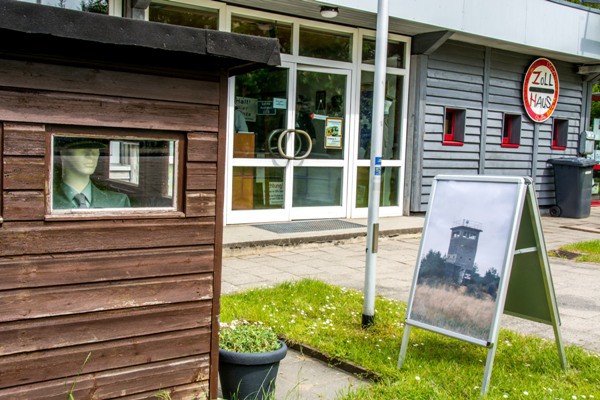
Follow the bend in the road, then walk for around 100 metres. If I hadn’t seen the satellite photo a few minutes earlier I’d have had no idea where to look. Beyond the roadside ditch wild flowers were swallowed up by the long grass, and only an occasional car broke the calm of an afternoon stroll in the German countryside.
If I’d been here 26 years ago I’d have had no trouble finding what I was looking for. I was in the north east of Germany, just outside the tiny village of Schlutup on the outskirts of Lübeck. It was just to the east of the village that the final, deadly layers of the inner German border passed as they wound their way south, dividing the country for 45 years before being joyfully overcome in those unforgettable days in November 1989. If I’d been here then and approached from the west, I might have got to within a few metres of the border. From the east, the no-man’s zone began around 5 km away; from there on there was barbed wire; there were dogs and searchlights; there were even landmines. Death was the guaranteed outcome of all escape attempts, or at least that was the clear message given to all who would think about such a terrible act.
I’d had my own brush with East Germany in my teenage years, when I took a train from Copenhagen to West Berlin in 1987. Our train-on-a-ship had docked at Warnemünde, just an hour or so along the Baltic Coast. My backpack was searched by an intimidating official at the port, despite there being no chance of getting off the train before it got to West Berlin; questions were asked about my music cassettes and my notebook; special interest was shown in my address book, which contained the details of several Polish relatives. Notes were taken, grunts were grunted and glares were delivered with maximum contempt before I was given my passport stamp. I remember speeding along a fortified railway line through the East German countryside before stopping for 2 hours in East Berlin. Dogs were sent under the carriages; plastic panelling was stripped from the ceilings of the compartment. More questions. Then finally we were cleared to make the 5-minute crossing to the freedom (and it really did feel like freedom) of West Berlin.
But that was then. Now there’s a just a rock marking out the old boundary, and the former no-man’s land is now a recognised nature reserve. There’s also a small museum just before the border. The Grenzdokumentations-Stätte Lübeck-Schlutup, or Border Documentation Site as it has been imaginatively named, is home to a collection of old East German memorabilia. There’s plenty of official material (documents, stamps, uniforms) but there are also simple everyday items such as communist-era chocolate wrappers and washing powder boxes; there’s even a Trabant rusting outside. Best of all are the videos which play in a little room downstairs. We saw two on our visit: one showing the different layers of the old border and just how impossible escape was meant to be (it’s incredible to think that a few folks managed it anyway); the other was a far more uplifting film, showing the scene from the road outside on the day after the fall of the Berlin Wall, when cars streamed westwards, with crowds cheering and waving and people from both sides of the border shedding tears of joy. The museum makes no provision for non-German speakers, but most of the exhibits require little translation.
Back in the sunshine I stared again beyond that bend in the road. How could a country be so forcefully divided? Who would have dared think back in 1989 that a drive or a walk along this stretch of road would now be so inconsequential? And what about other divided cities and countries? If this brutal border could be so dramatically cast aside by the people it was built to separate, then perhaps it can happen elsewhere too.




